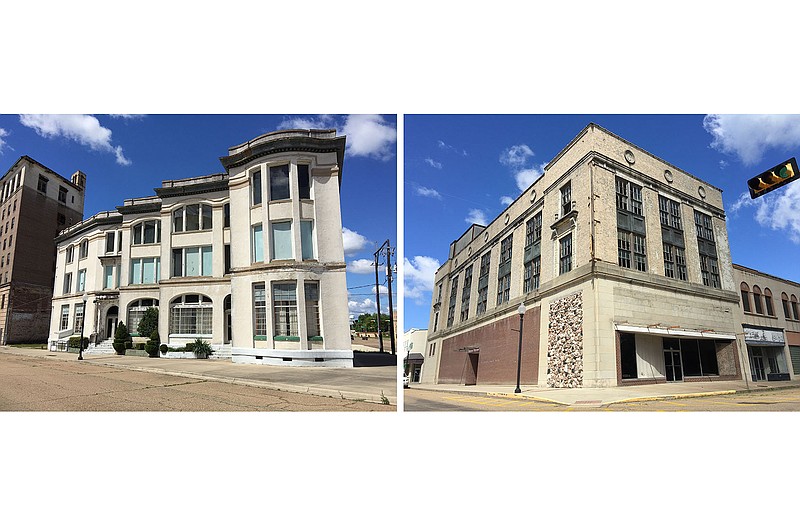Texarkana's soft rental market and higher than expected environmental cleanup costs caused the change of plans for the Hotel Grim renovation project announced last week.
Developer Jim Sari first intended to convert the Grim into 78 market-rate and 20 subsidized affordable-rate apartment units, but a recent survey indicated the Texarkana rental market will not support that ratio, he said. In addition, a large amount of lead-based paint and other environmental hazards will increase cleanup costs for the hotel by $500,000 to $1 million over initial estimates.
To compensate for the shortfall caused by lower rents and higher cleanup expenses, Sari now plans to make all of the Grim's 98 apartments affordable-rate units, making the project eligible for a 4 percent federal tax credit and additional financing through state-issued bonds.
He also plans to add two revenue streams by converting the former Sears store at 301 Pine St. into 20 to 25 market-rate apartments and the Harrell Building at 317 N. State Line Ave., formerly known as the Rialto and the Medical Arts Building, into office space.
"The short answer is: It's about the money. There's not enough money. The rents weren't high enough," Sari said in a telephone interview Thursday.
"The overall plan changed because the macro bottom line is doing 100 market-rate units is too risky. When we looked at the rents in the marketplace, they're the same as they were five years ago. They're, you know, 80, 90 cents, a dollar (per square foot). So you've got basically no rent growth. I assumed over time we'd see what I've seen in other markets, which is the rent going up, but that's just not been the case there. The gap is about 4 or 5 million dollars," he said.
One advantage Sari sees in the new bond deal is that he will be obligated to make affordable units available for only 15 years.
"Basically it's another 3 or 4 million in subsidy that in 15 years burns off, and (then) it can be whatever you want, condo, market-rate, continued affordable, tear it down, whatever you want to do. My gut feeling was the downtown's hurting. There's nothing going on. I mean, there's a little bit going on, but not much compared to a lot of towns. So we felt like that 15-year window would make sense," he said.
The affordable units will not be public or so-called Section 8 federally subsidized housing but apartments priced for people who make no more than 60 percent of Texarkana's adjusted median income.
"There are three striations. Public housing is 30 percent of median. Section 8 is 50 percent adjusted median. We're at 60 percent. We're at the highest we can be on the income restriction laws, and we're at the shortest time period we can be, and then we can pick up the 4 million dollars," Sari said.
The expense of environmental cleanup at the Grim is "about twice as bad as everybody thought," Sari said.
"You've got lead paint, you've got asbestos, just a whole bunch of stuff. I mean it's been raining in there for 20 years. It's going to cost a million dollars to get it out of there, is the bottom line. There's a lot more 'hot' areas than were originally suspected, and a lot of it in the walls. I'm going to have to tear off plaster and replaster, and that's expensive," he said.
Sale of the Grim to Sari is expected to close this summer, and he could close the Sears building's and Harrell Building's sales in the fall.
On Twitter: @RealKarlRichter

